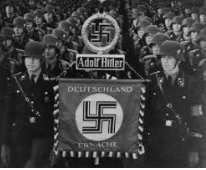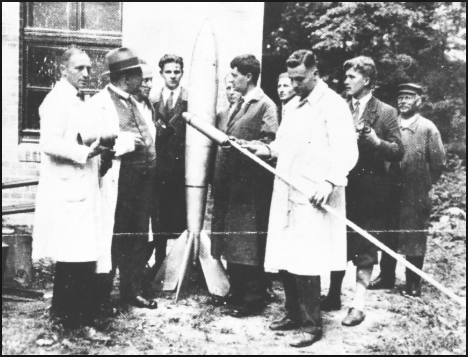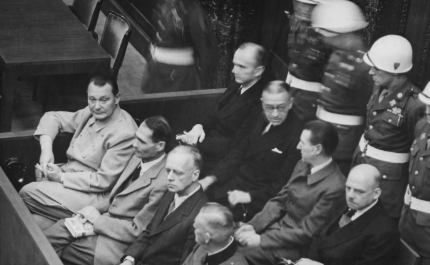Though set in our current century and wholly a work of fiction, A Knotted Rope refers often to events that transpired World War II. Here is a very brief look at some of that history referenced in the play. We also recommend further reading at the links provided below including: The Jewish Virtual Library, The US Holocaust Memorial & Museum website, Yad Vashem: The World Holocaust Memorial and Museum online, Smithsonian Magazine, and the History Channel’s official website.
Belzac was a concentration camp located in Poland. It was primarily a “killing center” from around 1941-1943. Over 430,000 Jewish people, particularly Polish Jews, Roma people (“gypsies”) and others were murdered there. Belzec was one of the camps the Nazis destroyed in an effort to hide their crimes.
Located in the northwest region of Germany, Buchenwald operated from 1937-1945 when it was liberated by the Russians. Along wth Jewish prisoners, it also held political prisoners, army deserters, and members of minority groups such as the Roma and even Jehovah’s Witnesses. Buchenwald utilized its prisoners for forced labor, but many people were executed there just the same. The camp, an exception to the rule, did not have fastidious record-keeping, but one estimate is that 56,000 people were murdered by SS in this camp. Buchenwald was also the management center for several “satelite” camps.
The SS & Other Killers
 In 1925, rising Nazi leader Adolf Hitler decided he needed personal bodyguards. Eight men he trusted , labeled the Schutzstaffel, or SS (“Protection Eschelon’ ) were appointed to do that job. As the unit expanded with Hitler’s power, his associate Heinrich Himmler took over and the group became more cult-like in its mandating of devotion to Hitler himself. The story of the SS’s development is long and dark, but by the beginning of the war, SS ranks had grown to a quarter of a million. They had specialized divisions- including the famed “Death’s Head” division which staffed Nazi concentration camps and the related Waffen-SS who terrorized whereever they went. The Gestapo, the much feared Nazi state police, fell under the oversight of The SS as did the Einsatzgruppen, the death squads the exterminated whole villages in places like Poland. As many as eight-hundred thousand people were members of the SS during the war, including collaborator foreign nationals in occupied countries.
In 1925, rising Nazi leader Adolf Hitler decided he needed personal bodyguards. Eight men he trusted , labeled the Schutzstaffel, or SS (“Protection Eschelon’ ) were appointed to do that job. As the unit expanded with Hitler’s power, his associate Heinrich Himmler took over and the group became more cult-like in its mandating of devotion to Hitler himself. The story of the SS’s development is long and dark, but by the beginning of the war, SS ranks had grown to a quarter of a million. They had specialized divisions- including the famed “Death’s Head” division which staffed Nazi concentration camps and the related Waffen-SS who terrorized whereever they went. The Gestapo, the much feared Nazi state police, fell under the oversight of The SS as did the Einsatzgruppen, the death squads the exterminated whole villages in places like Poland. As many as eight-hundred thousand people were members of the SS during the war, including collaborator foreign nationals in occupied countries.
Nazis & American Defense
They called it Operation Paperclip. The war was coming to an end, and the US knew the fight against the new enemy- The USSR – was only beginning. In a desperate hunt for new weapons and scientists capable of developing even more deadly machines, the US government’s newly born intelligence agencies began a program to use top Nazi engineers and scientsist to work on defense projects. Some of these Nazis were housed in Mexico. Some stayed in Germany. It is estimated that 1600 of them, and their families, were allowed to come to the US. None faced any penalty for wartime activities.

Perhaps the most famous of these “Paperclip men” was rocket scientist Wernher Von Braun who surrendered to American forces before the end of the war then helped develop rockets not only for weaponry but in the founding of American space exploration. Von Braun admitted to using slave labor from Buchenwald prison camp to do some of his German rocket building.
Post War Nazi Hunting: The US Government, Mossad and Others
As some US agencies, including the FBI and CIA were secretly letting Nazis into the country and putting them to work, other US agencies- and sometimes the same agencies- have been seeking to find, prosecute or deport Nazi war criminals hiding in America.
In the 1960s and 70s, high-profile Nazi “sightings” led the US Department of Justice to more intently hunt Nazis. They established The Office of Special Investigations for this task. The OSI was allowed to do everything from find, arrest, seek the deportation of and negotiate for repatriation of Nazi war criminals hiding in America. Sometimes, this has even meant revealing the criminals with whom the US government had previously been doing business. In some cases, it has also meant protracted legal battled between alleged Nazis and the OSI –notably in the case of John Demanjuk which last nearly 20 years in one form or another.
It should be noted, despite the import of its mission, the OSI has faced charges of misconduct, overly political motivations, and other flawed use of power. The
Private organizations have also been pursuing Nazis in hiding. The Simon Weisenthal Center is perhaps the most famous example. Outside the US, officials from Germany, Poland and other countries where atrocities were committed have made efforts, especially in recent years, to make war criminals face their crimes.
 (Nuremburg Trial)
(Nuremburg Trial)
The most successful Nazi “hunt” was no doubt that of Adolf Eichmann, one of the Holocaust’s chief designers. In 1960, Eichmann was found and captured in South American in by Mossad, the Israeli Intelligence agency. Though Mossad, like many other intelligence agencies, was and is not above assassinations, they did not kill Eichmann on sight. Instead, they brought him to Israel where he stood trial for crimes against the Jewish people. He was convicted and hanged — the only man to officially recieve the death penalty in Israeli history.
A Knotted Rope….
It would be giving away too much of our story to relate the source of our title. However, if you do see the show and pick up on where the title is mentioned, know that the event described is a true one, though the characters involved were fictionalized.